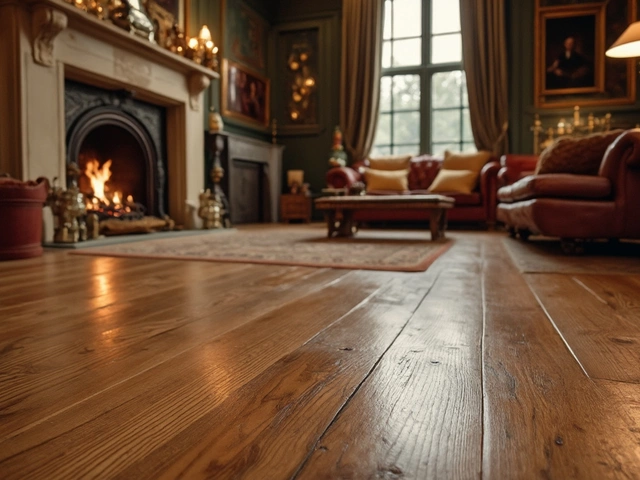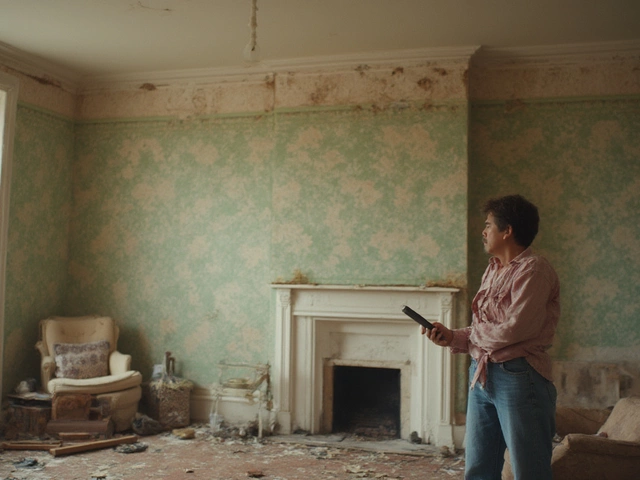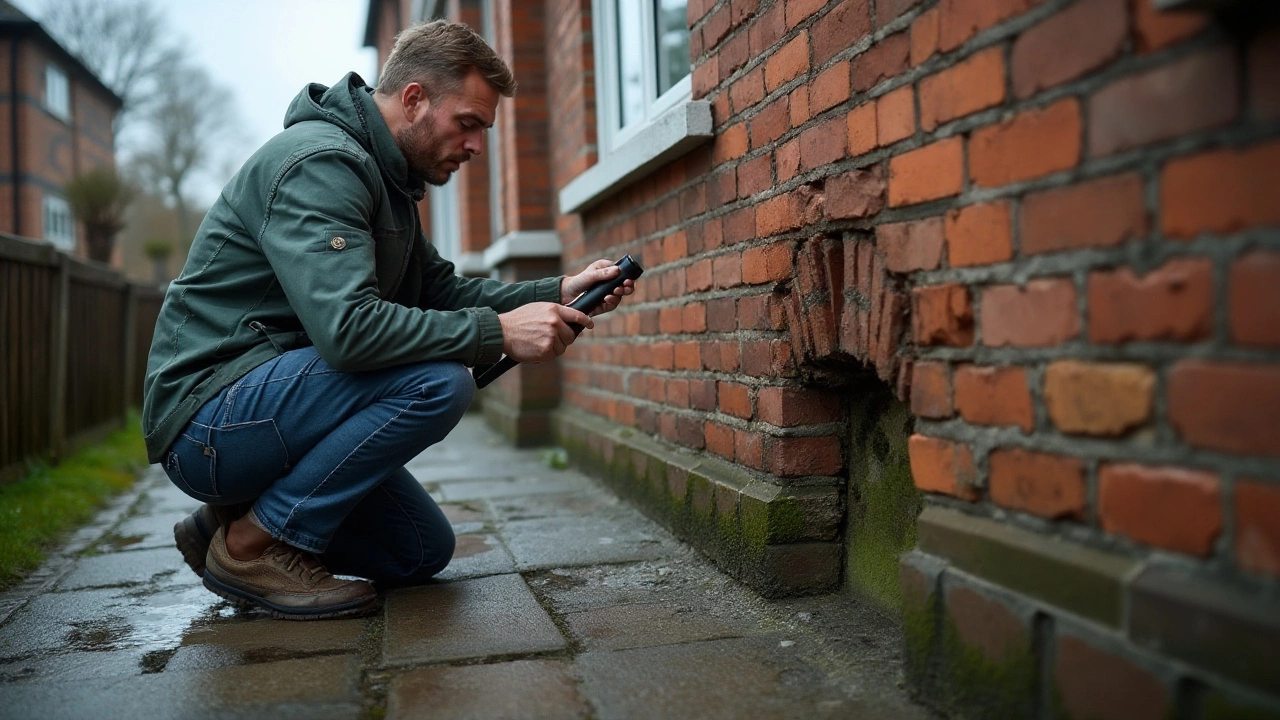
Water damage in a home's foundation can be a silent yet devastating issue if not detected early. It sneaks up in subtle ways, often showing little sign until significant harm has been done. Understanding what to look for can be the difference between a small repair and a major reconstruction.
In this guide, we'll delve into the telltale signs that your foundation may be suffering due to water intrusion. From inexplicable cracks to mysterious damp patches, these symptoms are your early warning signals.
Knowing the root causes and being proactive about care can help safeguard your home. We'll discuss common culprits and offer practical advice for prevention. Don't wait for disaster; learn when it's time to call in the pros for a thorough assessment.
- Signs of Water Damage
- Common Causes of Foundation Water Damage
- The Risks of Ignoring Water Damage
- Preventative Measures
- When to Seek Professional Help
- Expert Tips and Advice
Signs of Water Damage
One of the earliest warning signs of foundation damage due to water intrusion is the appearance of cracks in walls and floors. While some cracks can be harmless, resulting from the natural settling of the house, others aren't as benign. Vertical cracks, for instance, are typically less concerning than horizontal ones which can signal deep-seated structural issues. Larger gaps or cracks that seem to widen over time demand urgent investigation, as they might indicate serious underlying problems with the foundation's integrity.
An equally telling symptom is the presence of unexplained moisture where it shouldn’t be; for example, in basement walls or near the base of the structure. This dampness can manifest as discoloration, visible water stains, or even efflorescence, which appears as a white, powdery substance originating from evaporated minerals. Such stains are more than just unsightly; they pose a significant threat to the home's structure. Mold and mildew are frequent unwelcome guests in these damp environments, proliferating if not dealt with swiftly. This not only damages the foundation but also poses health risks.
As water builds up around the foundation, it can cause erosion of the soil and create gaps which lead to shifting. This movement is often first detected through doors and windows that stick or don’t open and close properly. These signs indicate that the foundation may no longer be level. An alarming statistic from the Home Builders Association suggests that nearly 80% of new homes experience some foundation movement within the first three years, primarily due to moisture issues.
According to the Journal of Light Construction, "A home's foundation is like the human skeleton; once damaged, it’s extremely difficult and costly to repair."
A noticeable drop or heave in certain areas of your floors could signal more than just an intolerable step. It could be a harbinger of serious structural damage caused by water. Uneven or sagging floors can arise from several factors, but water damage is a chief offender. When floors lose their pristine flat nature, it can also result in uneven baseboards, skirting boards, and doors that don’t hang as they should.
Sounds and Smells: The Subtle Signs
Beyond the visible and palpable signs, sound and smell play underrated roles in detecting water-based foundation damage. Do you hear mysterious drips or rushing water when there shouldn’t be any? This auditory cue could point to a leak in the pipes running through or near your foundation. On the olfactory front, a musty smell is a strong indicator of mildew, often a result of persistent damp conditions in hidden crevices. The nose doesn't lie; pay attention to any new odors in your home.Common Causes of Foundation Water Damage
Water is a powerful force, especially when it comes to the foundation of a home. There are several common causes of water-related issues in this critical part of your house. New Zealand’s maritime climate, with its distinct seasons, can exacerbate these problems. One primary cause is poor drainage systems. Inadequate or clogged gutter systems often fail to divert rainwater away from a house, leading to pooling around the foundation. If left unchecked, this water can seep into the concrete or masonry surfaces, gradually eroding the materials and creating structural weaknesses.
Another significant culprit is the grading of the land surrounding your home. If your property slopes towards your house instead of away from it, water runoff can accumulate near the foundation. This improper grading is more common than one might think and can be rectified with targeted landscaping strategies. In addition, plumbing leaks, though sometimes hard to detect, can contribute to water damage. Leaking pipes within the walls or beneath floors can elevate moisture levels around your foundation without obvious warning signs.
Seasonal changes also play a crucial role. During heavy rainfalls, such as those common in Auckland's wet season, the soil around a home can become oversaturated. As soil moisture levels increase, the pressure against the foundation walls grows, potentially leading to cracking or bowing of these walls. In dry spells, the opposite occurs, where shrinking soil can create voids that affect the foundation’s stability.
"Water damage is not something to take lightly. It accounts for over 30% of home insurance claims related to foundation issues," states the Foundation Repair Association.
Natural disasters, like floods, are another factor that, although infrequent, can have a catastrophic impact on foundations. A strong flood can compromise a foundation even if it's perceived as robust. The sudden and intense influx of water can push structures to their limits, often requiring significant repairs afterward. Coupled with this are the potential long-term consequences of poor construction practices. A foundation that wasn't built with proper waterproofing measures or one which lacks appropriate materials can become susceptible to water from the outset.
Tree roots are another often-overlooked problem. As they search for sources of water, roots can extend towards and under a house, disrupting the soil around the foundation. This process can create pathways for water to follow, increasing the risk of seepage. Selecting the right trees for your landscape and ensuring they are planted at a safe distance from your home is crucial in mitigating this risk.
Finally, it's essential to consider the role of humidity in crawlspaces and basements, which are part of many homes. A buildup of moisture without proper ventilation can lead to condensation. This condensation can contribute significantly to water damage over time. It's always a good idea to install a dehumidifier or ensure adequate airflow to prevent these areas from becoming trouble spots.
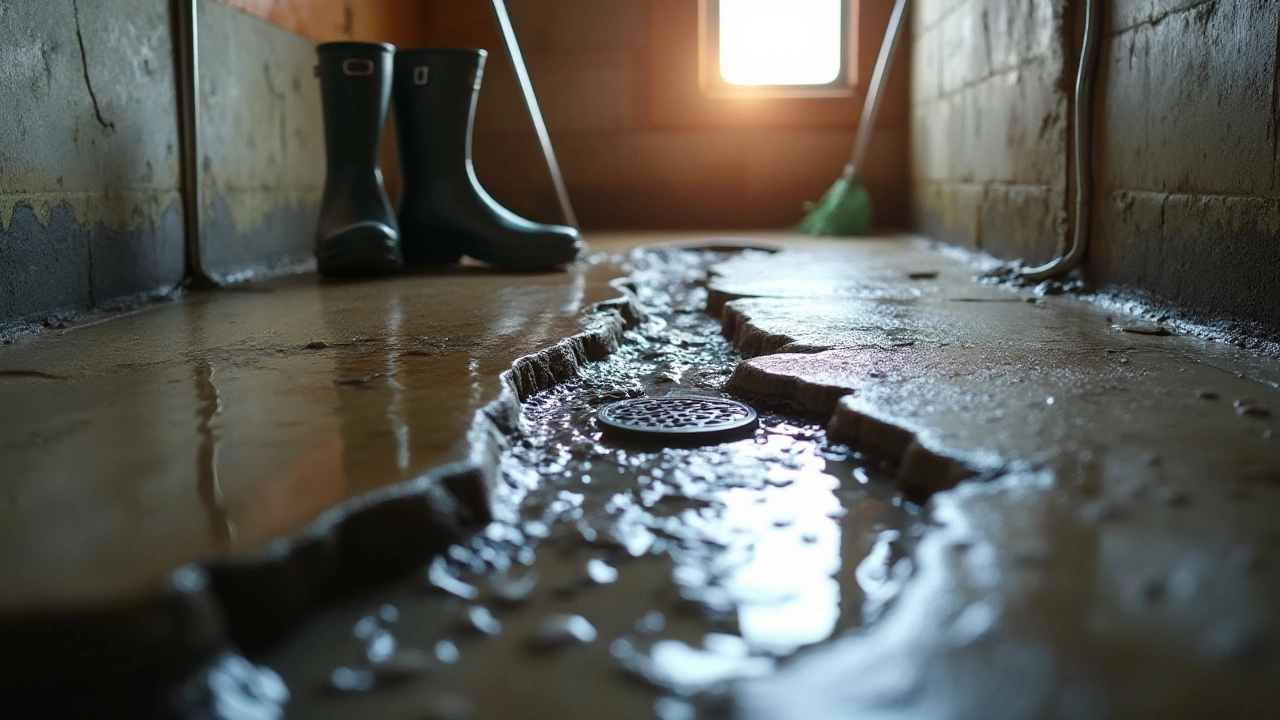
The Risks of Ignoring Water Damage
Turning a blind eye to water damage in your foundation is like playing a risky game of Jenga with your home. At first glance, a few cracks or a little moisture might seem inconsequential, but these apparent benign issues often disguise more severe underlying problems. Foundation damage is cumulative; it creeps up over time and can lead to a cascade of issues that can jeopardize the structural integrity of your house. When ignored, this damage extends beyond aesthetics, leading to doors and windows that refuse to close properly, floors that sag, and walls that begin to buckle. These are tell-tales not just of annoyance but of significant trouble brewing beneath your feet.
The financial ramifications of neglecting such damage can't be overstated. As minor issues escalate, so do the repair costs. Property experts warn that allowing a water-damaged foundation to fester could mean tens of thousands of dollars in repairs, compared to fixing the issue when it is initially discovered. The National Association of Realtors has noted in reports that homes with unresolved water issues can significantly lose market value, turning a coveted space into a tough sell.
"If you catch water damage early, you can save yourself a lot of headache and money," says a property maintenance expert, reminding homeowners of the financial wisdom in timely intervention.
Aside from the structural and financial implications, ignoring water damage poses extensive health risks. Mold flourishes in moisture-rich environments, leading to air-quality issues that affect the well-being of inhabitants. The Center for Disease Control warns against mold exposure, which can cause respiratory problems, allergic reactions, and even long-term health issues. Homes with high levels of humidity from water seepage are notorious for becoming breeding grounds for mold and mildew.
Moreover, there is the issue of pest infestations, as pests such as termites are more likely to invade a moist, weakened structure. These pests can cause extensive destruction, exacerbating foundational issues and contributing to further weakening. Ignored water damage is an open invitation to these unwanted guests, creating a bustling ecosystem of decay right under your nose.
Protective Measures Are Critical
Taking immediate action when signs of water damage appear is vital to mitigate these risks. It's not just about identifying the problem but implementing solutions to prevent future incidences. Catching these signs early allows for relatively straightforward remedies, such as improving drainage around the property, patching small cracks, and ensuring a robust waterproofing system is in place.
To illustrate, consider this simple yet crucial practice: regular inspections by a professional can help spot potential issues before they become apparent. This proactive approach saves time, money, and potential disappointment in the long run. Such vigilance, combined with informed action, keeps your home safe and sound while preserving its value for years to come.
Preventative Measures
When it comes to avoiding foundation damage due to water, being proactive is truly the best defence. Water damage doesn’t just appear overnight; it results from a buildup of conditions that can be mitigated with thoughtful home maintenance and awareness. Start by ensuring proper drainage around your home. Gutters and downspouts should be free of debris, allowing rainwater to flow unobstructed. It’s crucial that downspouts extend several feet away from the foundation, directing water away from your home's base.
A well-maintained landscape plays a vital role as well. Avoid planting trees or large shrubs too close to your house. Their roots can interfere with your foundation and cause cracking. Additionally, consider grading your yard properly. This means ensuring the slope of land directs water away from, rather than towards, the home. A landscape professional can help design an effective grading plan if this isn’t something you’re comfortable tackling on your own.
It's also wise to pay attention to the water usage inside your home. Regular inspections of your plumbing system can uncover leaks that may otherwise introduce excess moisture to areas near your foundation. Your basement or crawl space should be thoroughly insulated, providing a barrier against moisture seeping through thin walls. Installing a sump pump is an excellent way to handle unexpected flooding by efficiently moving water away from your property.
Weather conditions and seasonal changes are factors beyond our control, but fortifying your home against them isn’t. In regions with cold winters, make sure to winterize pipes to prevent them from freezing and bursting. Likewise, in areas prone to heavy rainfall, installing French drains can help manage water effectively. According to Brian Davis of Home Repair Experts, "Prudent homeowners know the value of a strong defense. Waterproofing and timely repairs can extend both the life and health of their homes significantly."
For those willing to invest, smart home technologies now offer moisture sensors that alert you to water leaks quickly, preventing damage before it escalates. These systems are a worthwhile consideration for anyone concerned about potential water-related issues. Regular inspections, ideally by professionals, are paramount. They can detect signs of trouble that may not be apparent to the untrained eye, giving you ample time to take corrective action.
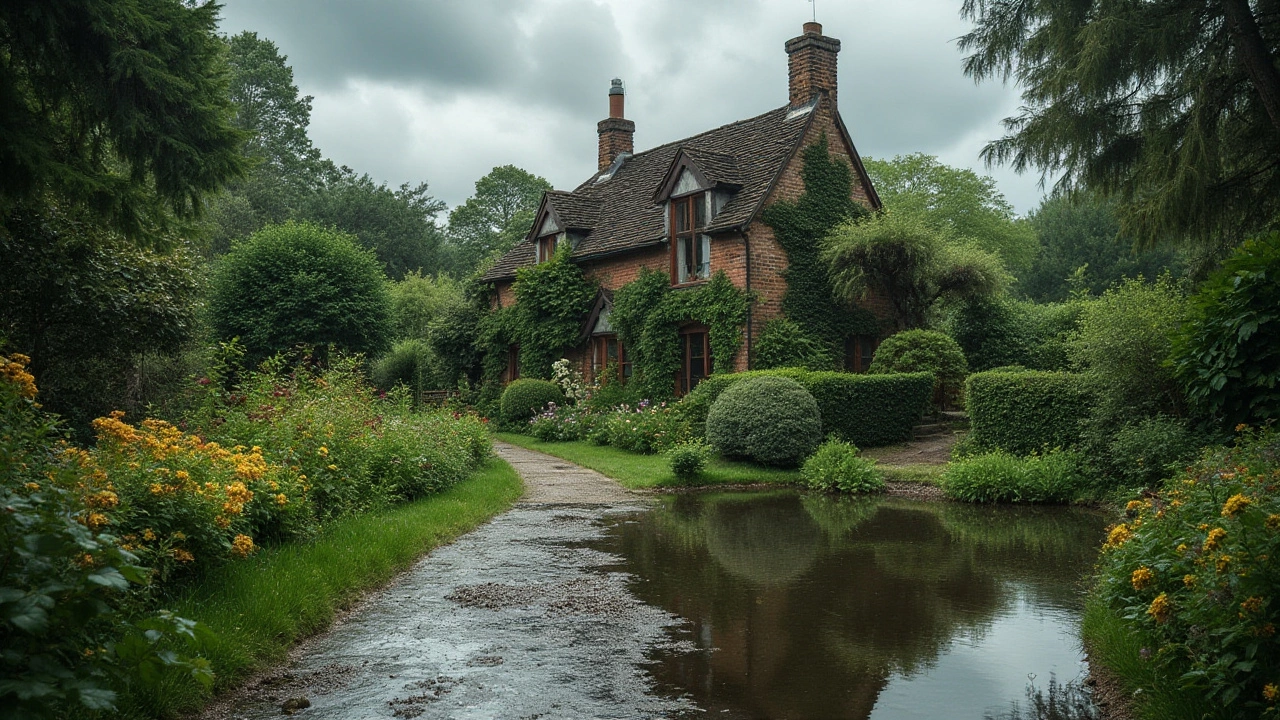
When to Seek Professional Help
Identifying when it's time to call in the experts can be crucial in safeguarding your home from escalating issues related to foundation damage. Often, homeowners are unsure of the gravity of the situation until a professional sets foot on the property. There are some unmistakable signals that it's time to seek professional assistance, rather than relying on DIY solutions or crossing your fingers for the best. For instance, if you notice cracks wider than a pencil or zigzagging patterns, these could suggest structural integrity issues requiring a thorough inspection. Another sign is if doors and windows become difficult to operate, a common indicator that the home is settling improperly due to unseen water damage.
Professionals use specialized tools and techniques to assess the extent of the harm. Moisture meters and thermal imaging cameras are just a few examples of the high-tech equipment that might be employed during an inspection. When coupled with their extensive knowledge and experience, these tools enable professionals to detect issues that might escape the untrained eye. It's also worth mentioning that licensed contractors offer peace of mind through insurance and guarantees on their work, which isn't a luxury available with DIY efforts.
If mold begins to creep into walls or you observe a persistent and unexplained damp smell, these are red flags that something beneath the surface needs urgent attention. It's not just about aesthetics; such symptoms can indicate serious structural damage. Attempting to tackle such issues without the necessary expertise might lead to more harm than good. There's wisdom in knowing when to step back and let the experts handle it, preserving both your home's value and your peace of mind.
A professional eye can also spot problems before they snowball. According to a report by the U.S. Department of Housing and Urban Development, nearly 50% of homes show some sign of water damage.
"Proactivity is key in avoiding catastrophic structural failures," says Maria Lopez, a foundation repair specialist with over two decades in the field. "Addressing issues early can save homeowners 30-40% in repair costs down the line."Her words ring true, reminding homeowners of the importance of preventative maintenance and timely intervention.
Many homeowners hesitate to call in help, fearing exorbitant costs. While it's true that repairs don't come cheap, replacement is costlier. Investing in a good inspection and addressing problems early often leads to longer-lasting solutions and less disruption over time. Knowing the state of your foundation enables informed decisions about your property's management and future maintenance plans.
In summary, keeping an eye on the early warning signs and taking them seriously is critical. Acting promptly to involve a professional can prevent additional stress and unexpected expenses. This proactive approach ensures your sanctuary remains safe, sound, and standing strong. Whether you're dealing with visible cracks, unusual odors, or ill-fitting doors, never take risks with your foundation – it's the cornerstone of your home.
Expert Tips and Advice
When it comes to protecting your home from water damage, taking expert advice is crucial. Experienced professionals suggest that preventing issues before they start is always better than reacting to problems after they've arisen. A key piece of advice shared by many engineers is to maintain proper drainage around the foundation. This means ensuring that gutters and downspouts are clear and directing water away from your home, which helps in significantly reducing potential risks. Checking these systems regularly can catch blockages early.
Another invaluable tip from structural experts highlights the importance of maintaining consistent moisture levels in the soil surrounding your home. Drastic changes in moisture can cause the soil to expand or shrink, putting undue stress on your foundation. During dry spells, watering the soil around your home can prevent it from drying out too much and pulling away from the foundation walls. This simple step can neutralize one of the common causes of foundation damage.
Professional Assessments
While many issues can be managed through vigilant personal maintenance, sometimes the keen eye of a seasoned professional is necessary. Inviting a foundation specialist to inspect your property every few years can preempt costly repairs. They can identify early signs of water damage that might be invisible to the untrained eye. Periodic assessments are an investment in your home's longevity and can save homeowners from unexpected, hefty repair bills later down the line.
"A small crack today could turn into a significant problem tomorrow; regular inspections help mitigate this risk," advises John Riley, a structural engineer with 20 years of experience.
For those considering landscaping changes, especially in areas prone to prolonged flooding or heavy rain, discussing plans with a specialist can provide invaluable insights. They can help design a landscape that naturally routes water away from vulnerable areas, using techniques such as grading land, planting water-absorbing plants, or constructing barriers.
DIY Maintenance Tips
For the DIY enthusiasts, there are a few simple practices you can incorporate into your regular home maintenance routine. First, perform a visual inspection of your foundation walls looking for any new cracks or water spots. A small flashlight can help you see into the darker corners of your basement or crawlspaces. Second, ensure that any area where water might collect, such as basement windows or access doors, is securely sealed. Proper sealing prevents water ingress during stormy weather.
Finally, armed with knowledge and a little bit of elbow grease, regular homeowner care and professional input make for a formidable defense against foundation damage. This integrated approach will ensure your home remains safe and sturdy, ready to withstand the elements.
